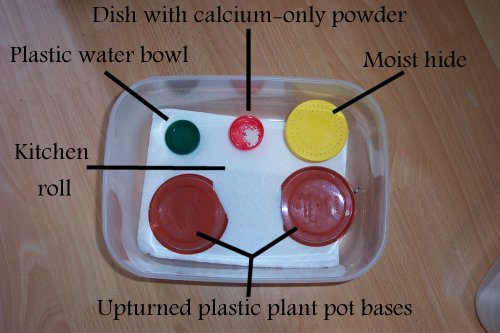
Leopard Gecko Baby Care: A Comprehensive Guide
Leopard geckos are popular pet reptiles due to their small size, docile nature, and vibrant colors. As with any pet, proper care is essential for their well-being and longevity. This comprehensive guide will provide detailed instructions on leopard gecko baby care, covering all aspects from housing and feeding to health and socialization.
Housing
- Enclosure: A 10-gallon tank is suitable for a single baby leopard gecko. As they grow, the enclosure should be upgraded to a 20-gallon tank for an adult.
- Substrate: Use a loose, non-abrasive substrate such as paper towels, reptile carpet, or a mixture of sand and soil. Avoid substrates that can be ingested, such as gravel or wood chips.
- Hideouts: Provide at least two hideouts, one on the warm side and one on the cool side of the enclosure. This allows the gecko to regulate its body temperature and feel secure.
- Temperature: Create a thermal gradient within the enclosure using a heat lamp or under-tank heater. The warm side should be around 85-90°F (29-32°C), while the cool side should be 75-80°F (24-27°C).
- Humidity: Leopard geckos require a humidity level of around 30-40%. This can be achieved by providing a humid hideout filled with damp sphagnum moss.
Feeding
- Diet: Baby leopard geckos should be fed live insects, such as crickets, mealworms, and dubia roaches. Dust the insects with calcium powder twice a week and vitamin powder once a week.
- Frequency: Feed baby geckos daily, offering 5-10 insects per feeding. As they grow, reduce the frequency to every other day or three times a week.
- Gut Loading: Before feeding insects to your gecko, gut load them by feeding them nutritious foods such as fruits, vegetables, and commercial gut-loading products. This ensures that your gecko receives essential nutrients.
- Water: Provide a shallow water dish filled with fresh water at all times.
Health
- Shedding: Leopard geckos shed their skin regularly. Provide a humid hideout to facilitate shedding and avoid handling the gecko during this process.
- Tail Loss: Leopard geckos can drop their tails as a defense mechanism. If this occurs, do not attempt to reattach the tail. Keep the area clean and dry, and it will eventually regenerate.
- Parasites: Leopard geckos can be susceptible to parasites such as mites and worms. Regular veterinary checkups are recommended to detect and treat any parasites.
- Metabolic Bone Disease: This condition occurs when a gecko does not receive enough calcium. Symptoms include soft or deformed bones, lethargy, and muscle weakness. Ensure your gecko has access to calcium supplements and a diet rich in calcium.
Socialization
- Handling: Handle baby leopard geckos gently and frequently to socialize them. Start by holding them for short periods and gradually increase the duration.
- Cohabitation: Leopard geckos are generally solitary creatures and should not be housed together unless they are a bonded pair. Introducing new geckos to an established enclosure can lead to aggression and stress.
- Enrichment: Provide enrichment activities such as climbing branches, hiding places, and live plants to stimulate your gecko’s natural behaviors.
Additional Tips
- Monitor Regularly: Observe your gecko’s behavior, appetite, and overall health daily. Any changes should be noted and reported to a veterinarian.
- Veterinary Care: Establish a relationship with a reptile veterinarian who specializes in leopard geckos. Regular checkups are essential for preventive care and early detection of health issues.
- Research: Continuously educate yourself about leopard gecko care. Read books, articles, and consult with experienced keepers to stay up-to-date on best practices.
- Patience: Raising a baby leopard gecko requires patience and consistency. Provide a stable and nurturing environment, and your gecko will thrive under your care.
Conclusion
Leopard gecko baby care involves providing a suitable enclosure, nutritious diet, proper health management, and socialization. By following the guidelines outlined in this comprehensive guide, you can ensure that your baby leopard gecko grows into a healthy and happy adult. Remember to monitor your gecko regularly, seek veterinary care when necessary, and continue to learn about their unique needs. With love and dedication, you can provide your leopard gecko with a long and fulfilling life.
